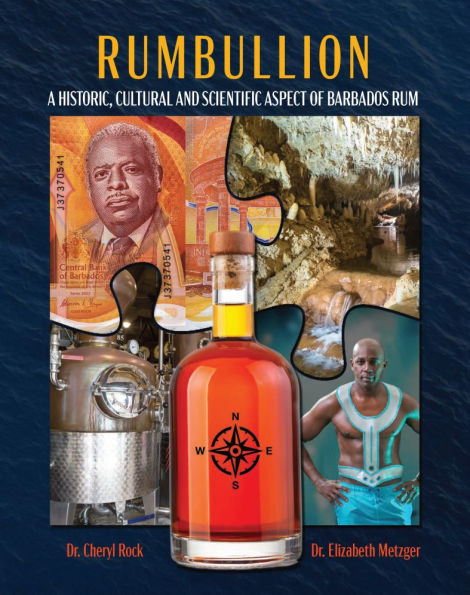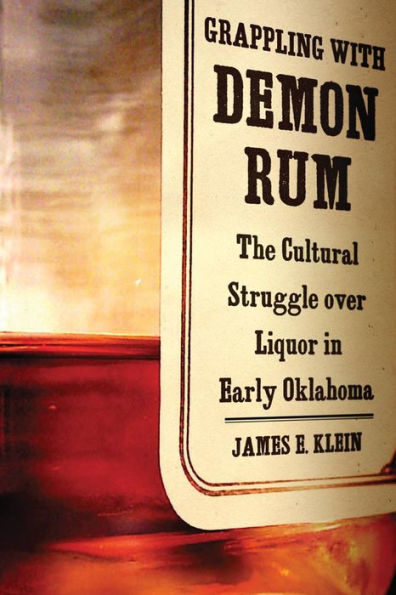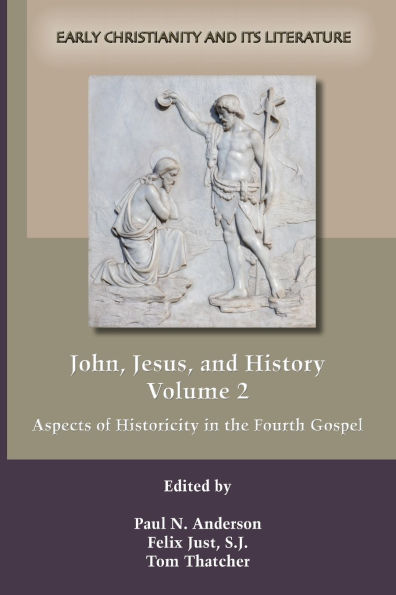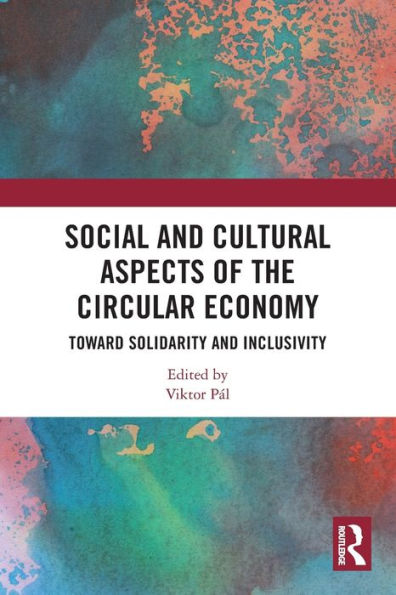Home
Rumbullion: A Historic, Cultural and Scientific Aspect of Barbados Rum
Barnes and Noble
Loading Inventory...
Rumbullion: A Historic, Cultural and Scientific Aspect of Barbados Rum in Franklin, TN
Current price: $29.99

Barnes and Noble
Rumbullion: A Historic, Cultural and Scientific Aspect of Barbados Rum in Franklin, TN
Current price: $29.99
Loading Inventory...
Size: OS
This book highlights four aspects of Barbados which are the following: distinct
geological features,
major
historical figures, rum production
, and
rum celebration.
Why is Barbados geologically unique for rum production?
Barbados, primarily made of coral limestone, resulting from historical tectonics phenomena between the Atlantic and Caribbean plates. Caves thus occurred, as a complementary process, with one of the most renowned formations being Harrison's Cave. It is famous for its pure calcium-rich, potable water for human consumption and rum-making.
Who are the major figures in the rum economy?
Barbados has a plethora of famous historical figures. For example, Sir
John Gay Alleyne
was an educational and humanitarian philanthropist for which the Mount Gay Distillery bears his name. Additionally, the distinguished
Sir Errol Walton Barrow
became the founding Father of Independence and the First Prime Minister of Barbadosinitiating progressive reforms and industrial developments to the economy.
How is rum produced?
Rum is an enduring staple in Barbados. Foursquare, Mount Gay, St. Nicholas Abbey and West Indies Rum distilleries, produce distinct types of rum. However, they all use copper pot and column still distillation technology, along with charred American Kentucky White Oak barrels for aging.
How is rum celebrated?
The Crop Over festival and Kadooment fuse ancestral African and modern Barbadian culture and spiritual traditions. The festivals celebrate the harvest of the sugar cane crop for rum making.
To summarize, readers will:
Gain insights that distinguish Barbados historically and culturally from other geographical locations for rum production.
Experience sites vicariously or on-site-with both settings offering stimulating and educational experiences.
Engage at their own pace with the contents of the book to fulfill personal objectivesfor pleasure, enlightenment, and referenceconcerning the historical, cultural, and scientific aspects of Barbados rum.
geological features,
major
historical figures, rum production
, and
rum celebration.
Why is Barbados geologically unique for rum production?
Barbados, primarily made of coral limestone, resulting from historical tectonics phenomena between the Atlantic and Caribbean plates. Caves thus occurred, as a complementary process, with one of the most renowned formations being Harrison's Cave. It is famous for its pure calcium-rich, potable water for human consumption and rum-making.
Who are the major figures in the rum economy?
Barbados has a plethora of famous historical figures. For example, Sir
John Gay Alleyne
was an educational and humanitarian philanthropist for which the Mount Gay Distillery bears his name. Additionally, the distinguished
Sir Errol Walton Barrow
became the founding Father of Independence and the First Prime Minister of Barbadosinitiating progressive reforms and industrial developments to the economy.
How is rum produced?
Rum is an enduring staple in Barbados. Foursquare, Mount Gay, St. Nicholas Abbey and West Indies Rum distilleries, produce distinct types of rum. However, they all use copper pot and column still distillation technology, along with charred American Kentucky White Oak barrels for aging.
How is rum celebrated?
The Crop Over festival and Kadooment fuse ancestral African and modern Barbadian culture and spiritual traditions. The festivals celebrate the harvest of the sugar cane crop for rum making.
To summarize, readers will:
Gain insights that distinguish Barbados historically and culturally from other geographical locations for rum production.
Experience sites vicariously or on-site-with both settings offering stimulating and educational experiences.
Engage at their own pace with the contents of the book to fulfill personal objectivesfor pleasure, enlightenment, and referenceconcerning the historical, cultural, and scientific aspects of Barbados rum.
This book highlights four aspects of Barbados which are the following: distinct
geological features,
major
historical figures, rum production
, and
rum celebration.
Why is Barbados geologically unique for rum production?
Barbados, primarily made of coral limestone, resulting from historical tectonics phenomena between the Atlantic and Caribbean plates. Caves thus occurred, as a complementary process, with one of the most renowned formations being Harrison's Cave. It is famous for its pure calcium-rich, potable water for human consumption and rum-making.
Who are the major figures in the rum economy?
Barbados has a plethora of famous historical figures. For example, Sir
John Gay Alleyne
was an educational and humanitarian philanthropist for which the Mount Gay Distillery bears his name. Additionally, the distinguished
Sir Errol Walton Barrow
became the founding Father of Independence and the First Prime Minister of Barbadosinitiating progressive reforms and industrial developments to the economy.
How is rum produced?
Rum is an enduring staple in Barbados. Foursquare, Mount Gay, St. Nicholas Abbey and West Indies Rum distilleries, produce distinct types of rum. However, they all use copper pot and column still distillation technology, along with charred American Kentucky White Oak barrels for aging.
How is rum celebrated?
The Crop Over festival and Kadooment fuse ancestral African and modern Barbadian culture and spiritual traditions. The festivals celebrate the harvest of the sugar cane crop for rum making.
To summarize, readers will:
Gain insights that distinguish Barbados historically and culturally from other geographical locations for rum production.
Experience sites vicariously or on-site-with both settings offering stimulating and educational experiences.
Engage at their own pace with the contents of the book to fulfill personal objectivesfor pleasure, enlightenment, and referenceconcerning the historical, cultural, and scientific aspects of Barbados rum.
geological features,
major
historical figures, rum production
, and
rum celebration.
Why is Barbados geologically unique for rum production?
Barbados, primarily made of coral limestone, resulting from historical tectonics phenomena between the Atlantic and Caribbean plates. Caves thus occurred, as a complementary process, with one of the most renowned formations being Harrison's Cave. It is famous for its pure calcium-rich, potable water for human consumption and rum-making.
Who are the major figures in the rum economy?
Barbados has a plethora of famous historical figures. For example, Sir
John Gay Alleyne
was an educational and humanitarian philanthropist for which the Mount Gay Distillery bears his name. Additionally, the distinguished
Sir Errol Walton Barrow
became the founding Father of Independence and the First Prime Minister of Barbadosinitiating progressive reforms and industrial developments to the economy.
How is rum produced?
Rum is an enduring staple in Barbados. Foursquare, Mount Gay, St. Nicholas Abbey and West Indies Rum distilleries, produce distinct types of rum. However, they all use copper pot and column still distillation technology, along with charred American Kentucky White Oak barrels for aging.
How is rum celebrated?
The Crop Over festival and Kadooment fuse ancestral African and modern Barbadian culture and spiritual traditions. The festivals celebrate the harvest of the sugar cane crop for rum making.
To summarize, readers will:
Gain insights that distinguish Barbados historically and culturally from other geographical locations for rum production.
Experience sites vicariously or on-site-with both settings offering stimulating and educational experiences.
Engage at their own pace with the contents of the book to fulfill personal objectivesfor pleasure, enlightenment, and referenceconcerning the historical, cultural, and scientific aspects of Barbados rum.

















